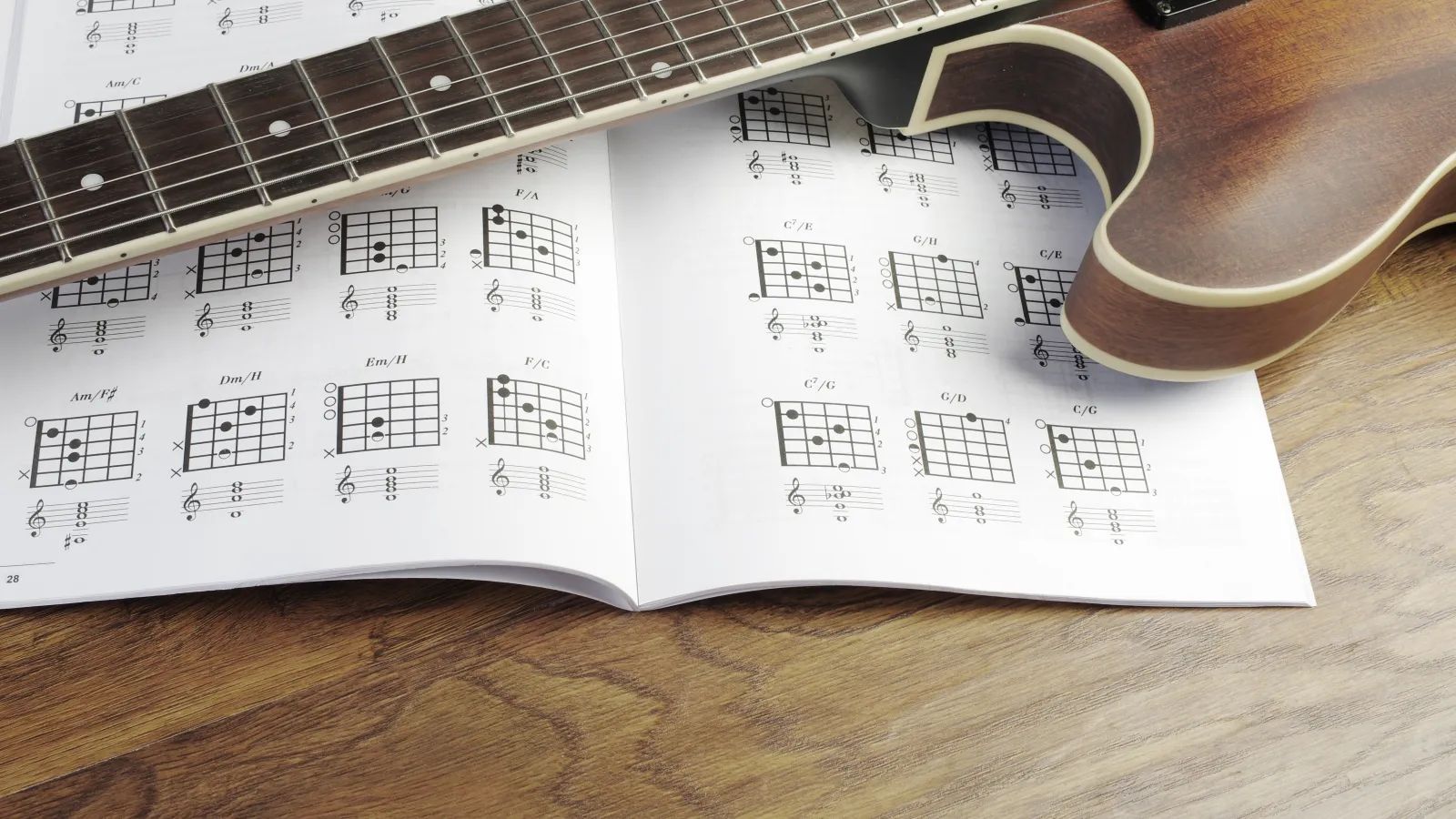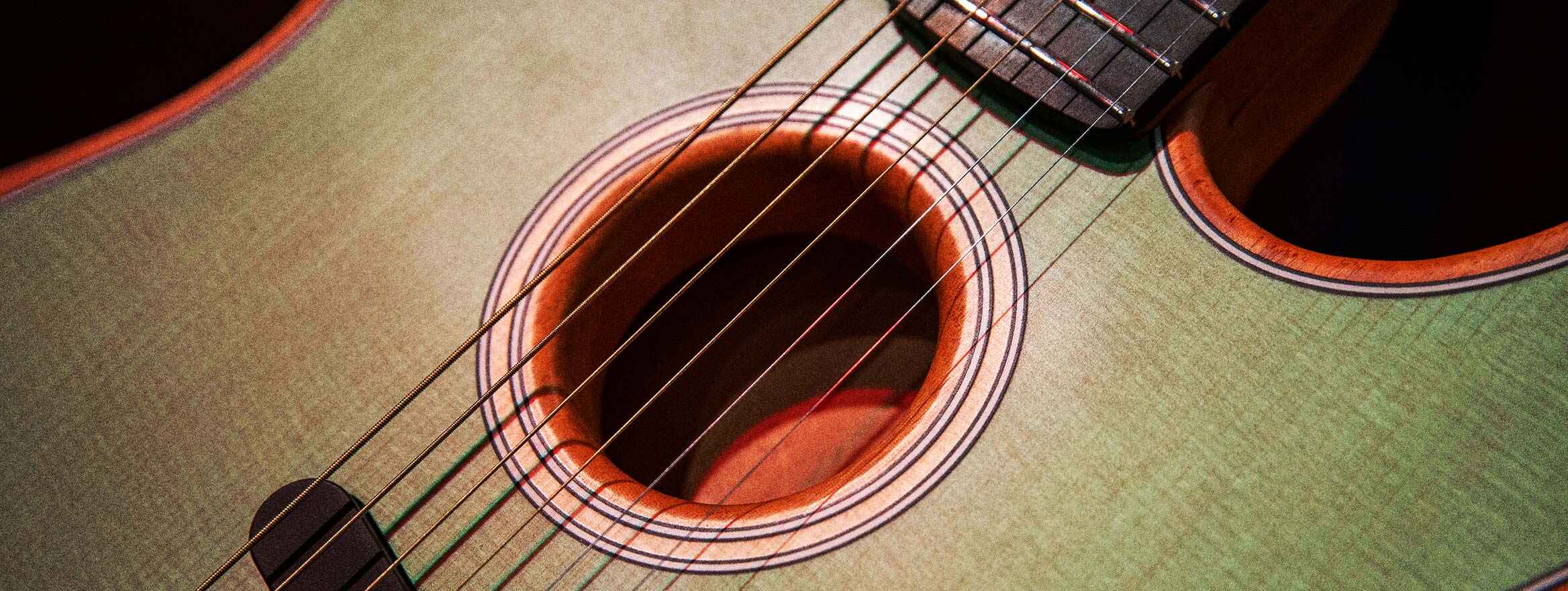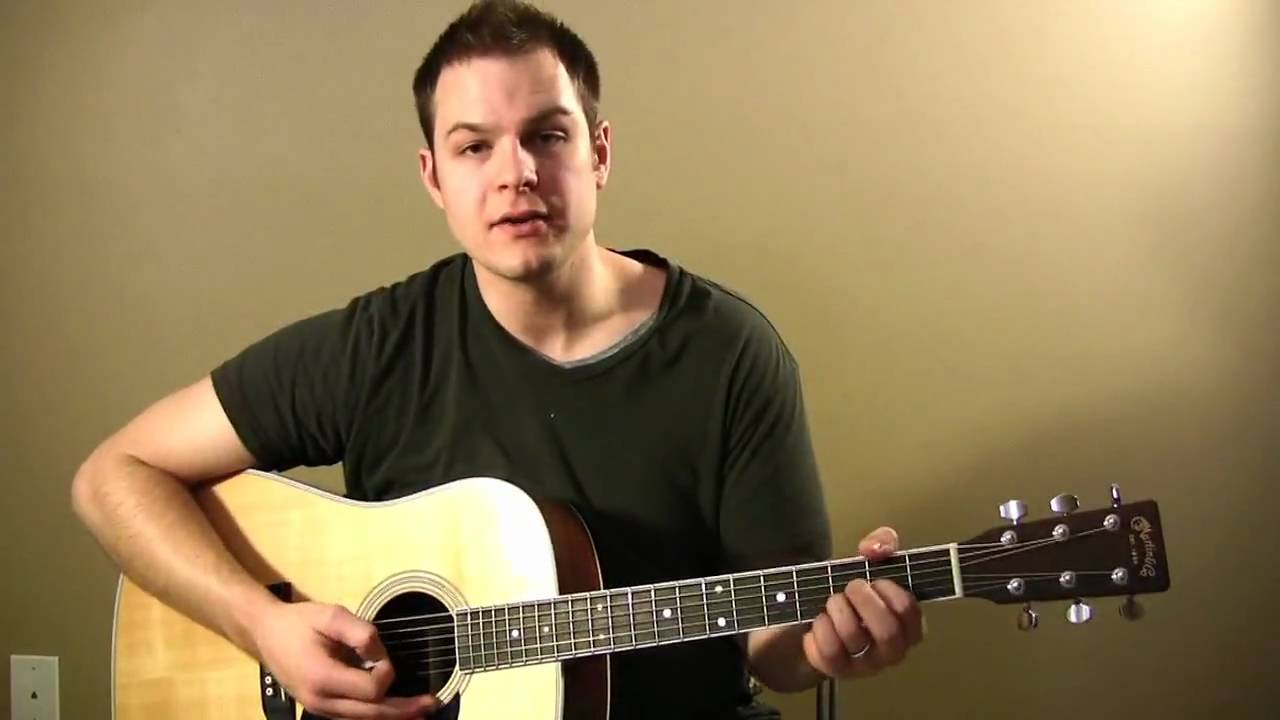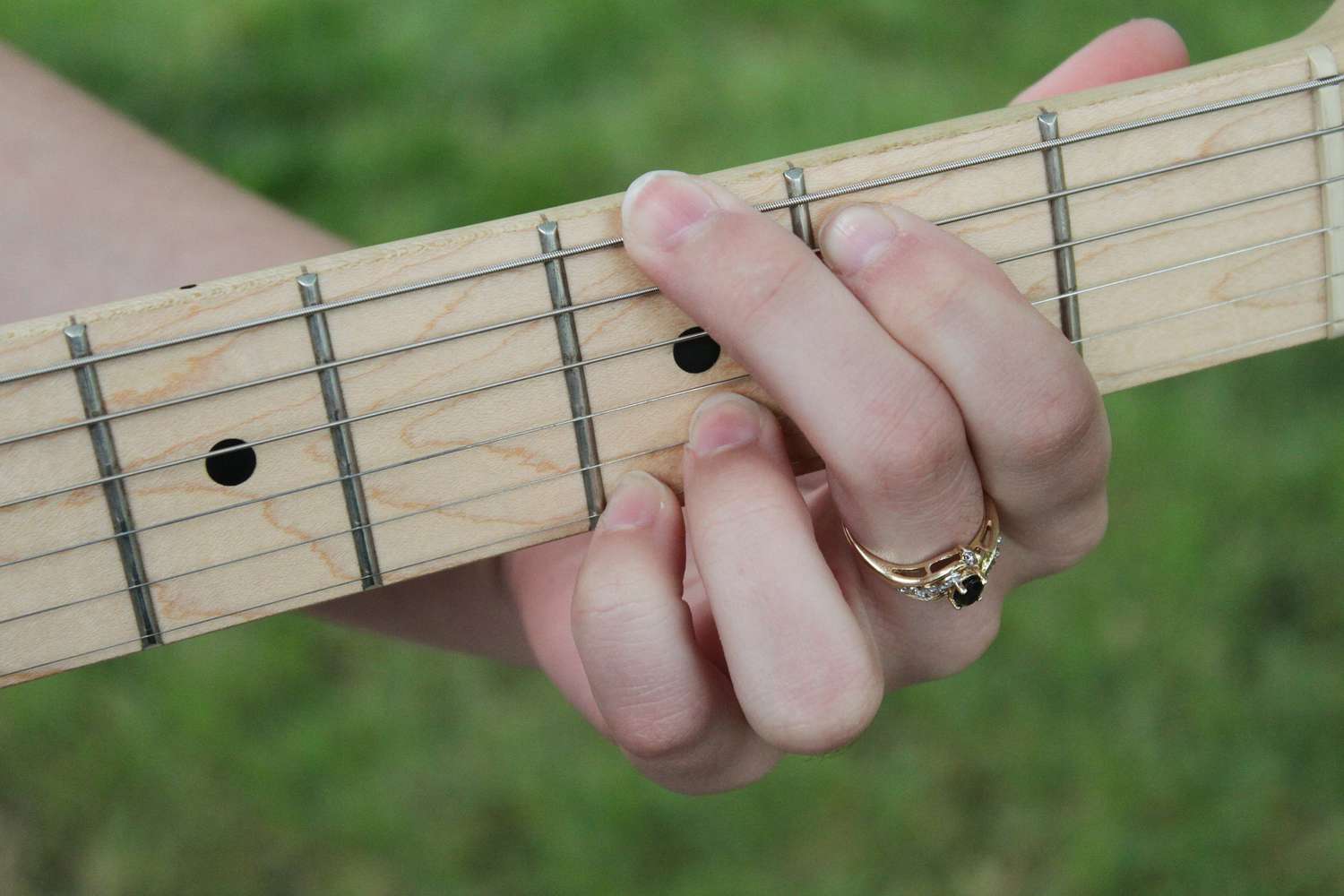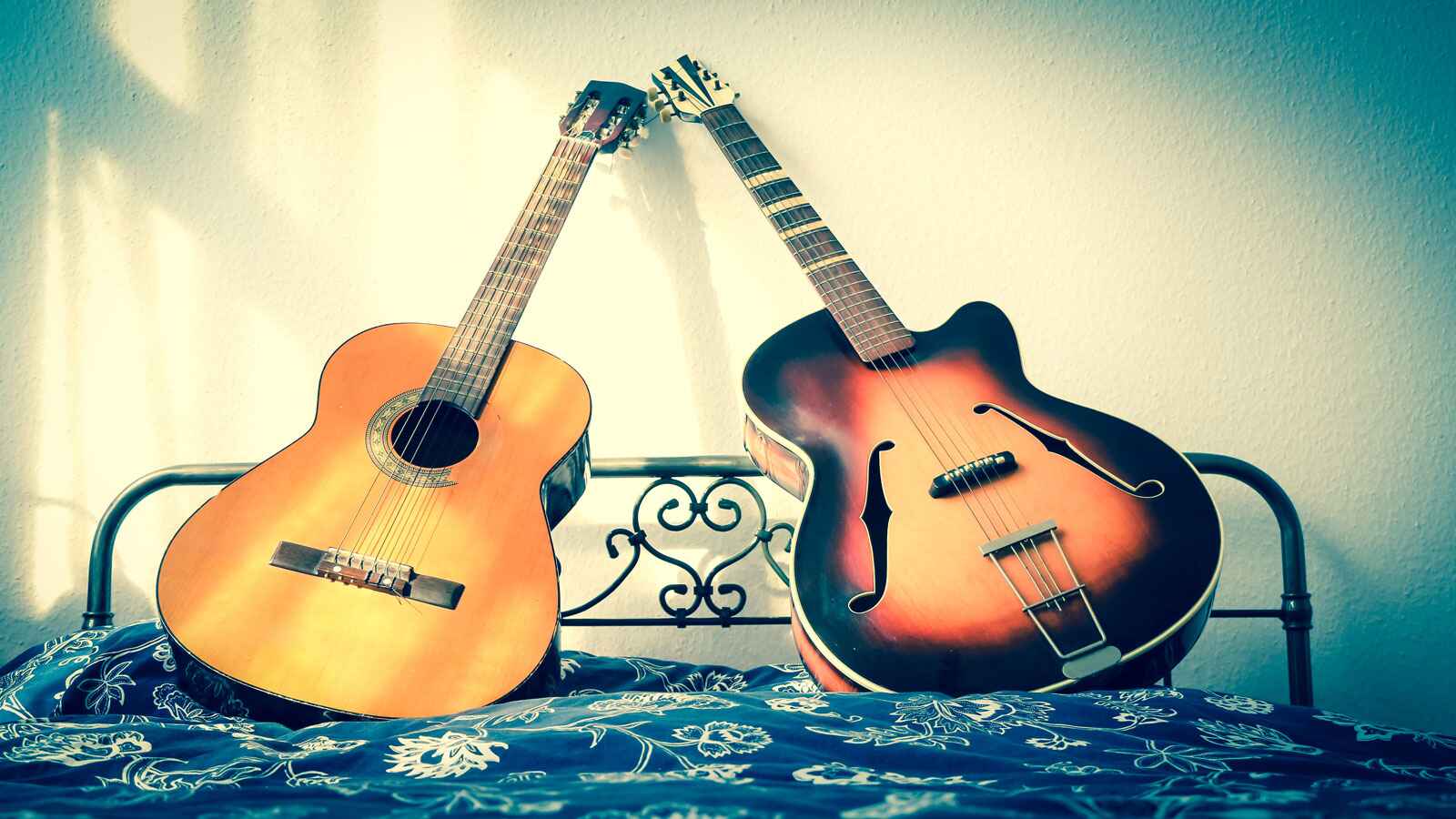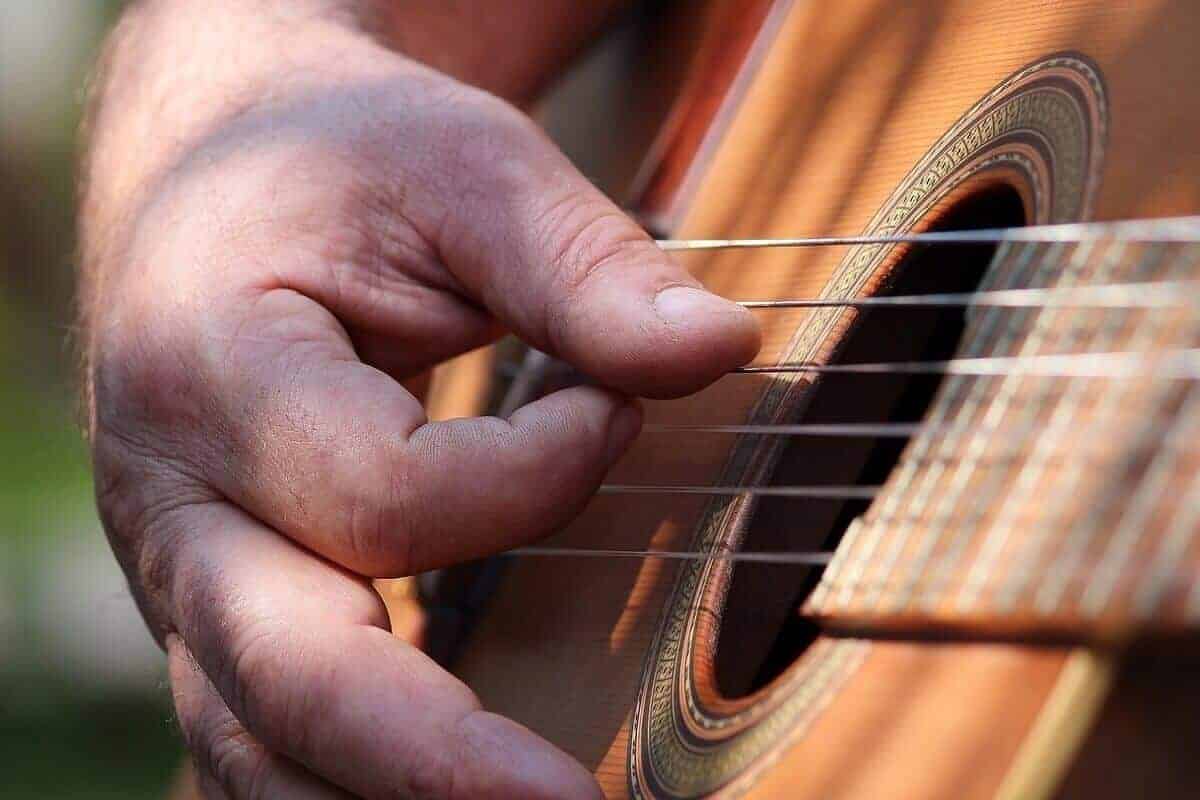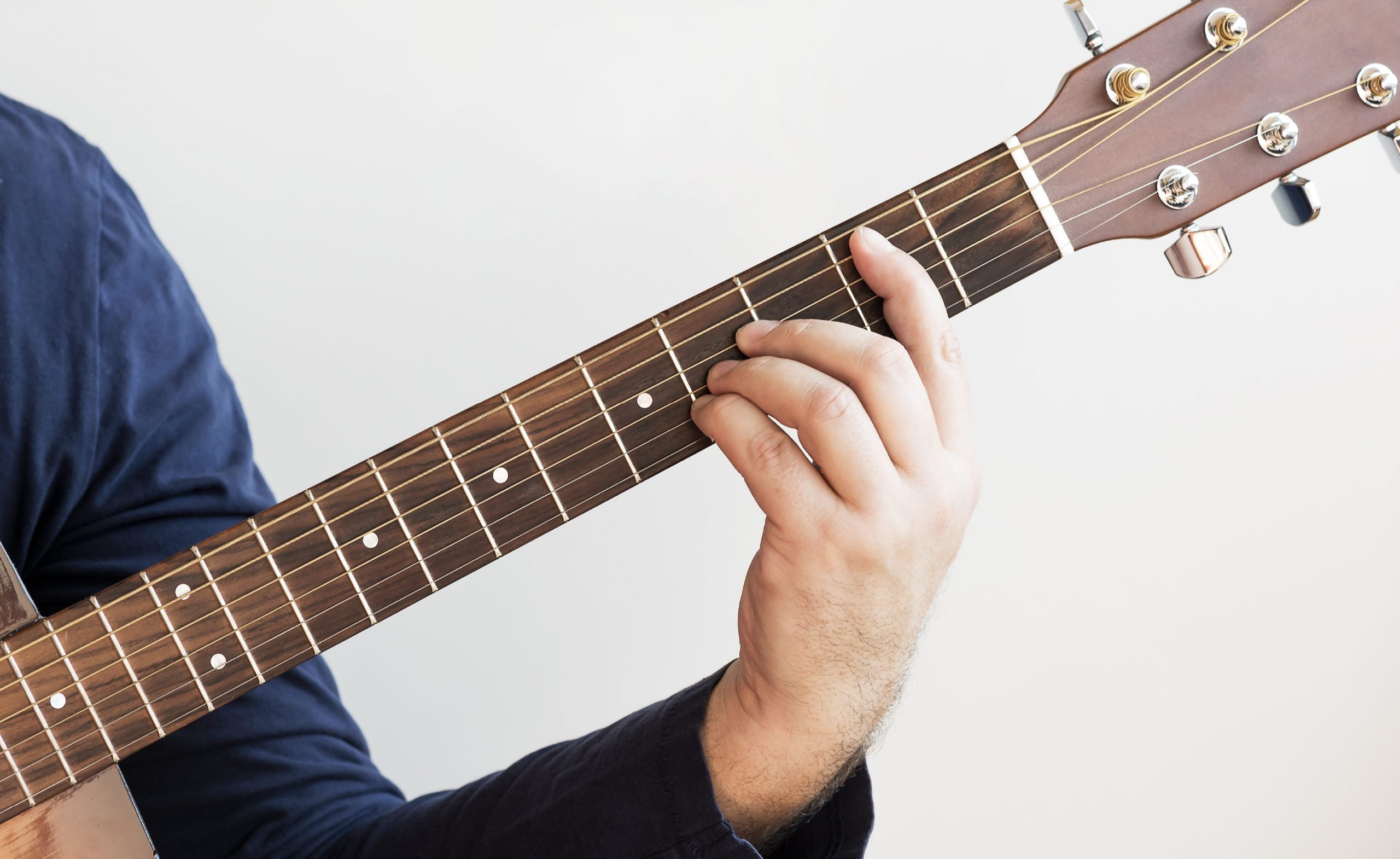Introduction
Are you an aspiring acoustic guitar player looking to expand your chord repertoire? Look no further! In this article, we will explore the fascinating world of acoustic guitar chords and discover just how many of them exist. Whether you’re a beginner looking to learn your first chords or an intermediate player wanting to explore more advanced options, understanding the various types of chords available is essential.
Chords are the building blocks of music, and they provide the harmonic foundation for countless songs across different genres. They are made by combining different notes played simultaneously, creating a rich and harmonious sound that brings songs to life. With the vast array of chord possibilities, it’s no wonder that many guitarists enjoy the endless exploration and discovery of new chord shapes.
As you embark on your journey to expand your chord knowledge, it’s important to note that there are different types of chords, each with its unique sound and character. Major chords, minor chords, dominant 7th chords, suspended chords, augmented chords, diminished chords, power chords, barre chords, and open chords are just a few of the chord categories you can explore.
In the following sections, we will delve into each of these chord categories, explore their characteristics, and provide examples of commonly used chords within each category. By the end of this article, you’ll have a better understanding of the numerous acoustic guitar chords at your disposal and be equipped to take your playing to new heights.
Major Chords
Major chords are one of the foundational chord types in music and are often the first chords beginners learn when starting to play the guitar. These chords have a bright and happy sound and are commonly used in a wide range of songs across various genres.
Major chords are formed by combining the root note, the major third, and the perfect fifth interval. For example, the C major chord is comprised of the notes C, E, and G. To play a major chord on the guitar, you usually play multiple strings simultaneously, pressing down specific frets and strings with your fingers in a specific shape.
Major chords can be played in different positions on the guitar neck, giving you the ability to play them in various keys. Some common major chord shapes include the open position chords like C major, G major, and D major, as well as movable barre chord shapes that allow you to play major chords all over the fretboard.
Learning major chords is essential for building a strong foundation in guitar playing. They provide the fundamental tonal structure of a song and are often the starting point for chord progressions. By mastering the major chords and their variations, you’ll be able to play a wide range of songs and expand your chord vocabulary.
Some popular songs that feature major chords prominently include “Wonderwall” by Oasis, “Hey Jude” by The Beatles, and “Brown Eyed Girl” by Van Morrison. These songs showcase the versatility and widespread use of major chords in popular music.
So, whether you’re strumming along to your favorite songs or creating your own music, major chords are an essential component of the acoustic guitar player’s arsenal. Practice them diligently, experiment with different chord shapes, and soon you’ll be mesmerizing listeners with the beautiful sound of major chords.
Minor Chords
While major chords may be the first chords beginners learn, minor chords are equally important in shaping the musical landscape. Minor chords evoke a sense of melancholy, sadness, or tension and are often used in emotional and introspective songs.
Similar to major chords, minor chords are formed by combining the root note, the minor third, and the perfect fifth interval. For example, the A minor chord consists of the notes A, C, and E. The difference lies in the third interval, which is slightly lowered compared to the major third.
Minor chords can be played in various positions and shapes on the guitar neck, just like major chords. Some common open position minor chords include Am, Em, and Dm, while movable barre chord shapes allow you to play minor chords in different keys.
Understanding and mastering minor chords expands your musical vocabulary and enables you to infuse a different emotional quality into your playing. Many iconic songs rely heavily on minor chords to create a somber or introspective atmosphere. Examples of famous songs that feature minor chords include “Hallelujah” by Leonard Cohen, “Creep” by Radiohead, and “Wish You Were Here” by Pink Floyd.
As you progress in your guitar journey, learning and practicing minor chords alongside major chords will greatly enhance your versatility as a player. The ability to switch seamlessly between major and minor chords will allow you to explore a wider range of musical styles and create more dynamic and expressive compositions.
So, don’t overlook the importance of minor chords in your guitar playing. Embrace the emotional depth they offer, experiment with different shapes and positions, and open up a world of musical possibilities.
Dominant 7th Chords
When it comes to adding a bluesy or jazzy flavor to your chord progressions, dominant 7th chords are the way to go. These chords have a unique and distinctive sound that can add tension and excitement to your playing.
Dominant 7th chords are formed by adding a flattened seventh interval to a major chord. This interval gives these chords their distinct character and is often denoted by the number 7. For example, the G7 chord is composed of the notes G, B, D, and F.
Playing dominant 7th chords on the guitar involves a combination of fretting specific strings and applying finger placements. Common shapes for dominant 7th chords include open position chords like G7 and A7, as well as movable barre chord shapes that can be played in any key.
These chords are often used in blues, rock, and jazz music, as they provide a rich harmonic color and create a sense of tension that can be resolved in the following chord progression. Dominant 7th chords are also commonly used in turnarounds and as secondary dominants to add a spicy twist to your chord progressions.
Famous songs that incorporate dominant 7th chords include “Stormy Monday” by T-Bone Walker, “Sweet Home Chicago” by Robert Johnson, and “Autumn Leaves” by Joseph Kosma. These songs showcase how dominant 7th chords can elevate the musical complexity and add a soulful touch to your playing.
By incorporating dominant 7th chords into your repertoire, you’ll be able to explore new musical territories and add a touch of sophistication to your playing. Practice different chord shapes, experiment with different rhythms and voicings, and elevate your guitar skills with the captivating sound of dominant 7th chords.
Suspended Chords
If you’re looking to add some interesting and ethereal flavors to your chord progressions, suspended chords are worth exploring. These chords provide a unique and captivating sound that can add intrigue and tension to your guitar playing.
Suspended chords, often denoted as sus chords, are formed by replacing the third note of a major or minor chord with either the second (sus2) or fourth (sus4) interval. This substitution creates a suspended or unresolved sound that can be resolved back to the original chord.
Playing suspended chords on the guitar involves fretting specific strings and altering finger positions. Common shapes for sus2 and sus4 chords include open position chords like Asus2 and Dsus4, as well as movable barre chord shapes that can be played in different keys and positions.
Suspended chords are commonly used in various genres, including pop, folk, and alternative music. They provide a dreamy and ambient quality that can evoke different emotions and moods within a song.
Some famous songs that incorporate suspended chords include “Wonderwall” by Oasis, “Blackbird” by The Beatles, and “Yellow” by Coldplay. These songs demonstrate how suspended chords can add an element of charm and uniqueness to your guitar playing.
By incorporating suspended chords into your repertoire, you’ll be able to create more dynamic and interesting chord progressions. Experiment with different chord shapes, combine suspended chords with other chord types, and let your creativity soar with the mesmerizing sound of suspended chords.
Augmented Chords
Augmented chords add a touch of mystery and tension to your chord progressions. They have a distinct, shimmering sound that can elevate your guitar playing and create a sense of heightened emotion.
An augmented chord is formed by raising the fifth note of a major or minor chord by one half-step. This alteration gives the chord a unique and dissonant quality. For example, the C augmented chord consists of the notes C, E, and G sharp.
Playing augmented chords on the guitar involves fretting specific strings and adjusting finger placements. Common shapes for augmented chords include open position chords like C augmented and G augmented, as well as movable barre chord shapes that can be played in different keys.
Augmented chords are often used to add tension and resolution within chord progressions. They can create a sense of anticipation, making the resolution to the next chord more satisfying. Augmented chords are commonly found in jazz and classical music but can also be used to add a unique twist to other genres.
Famous songs that incorporate augmented chords include “Money” by Pink Floyd, “Strawberry Fields Forever” by The Beatles, and “Purple Haze” by Jimi Hendrix. These songs showcase how augmented chords can add a captivating and unexpected element to your guitar playing.
By incorporating augmented chords into your repertoire, you’ll be able to explore new harmonic possibilities and add a touch of complexity to your compositions. Experiment with different chord shapes, combine augmented chords with other chord types, and let the enchanting sound of augmented chords inspire your musical creativity.
Diminished Chords
Diminished chords have a unique and haunting quality that can add tension, suspense, or a sense of unease to your chord progressions. They are often used to create a sense of resolution or to add color to your guitar playing.
A diminished chord is formed by stacking two minor thirds on top of each other. This means that the chord consists of the root note, a flattened third, and a diminished fifth. For example, the C diminished chord is composed of the notes C, Eb, and Gb.
Playing diminished chords on the guitar involves learning specific fingerings and chord shapes. Common shapes for diminished chords include open position chords like Cdim and Gdim, as well as movable barre chord shapes that can be played in different positions.
Diminished chords are often used as passing chords or to transition between other chords smoothly. They create a sense of movement and can add a touch of tension before resolving to a more stable chord. Diminished chords are commonly found in jazz, classical, and even metal music.
Some famous songs that utilize diminished chords include “The Girl from Ipanema” by Antonio Carlos Jobim, “Purple Rain” by Prince, and “Black Sabbath” by Black Sabbath. These songs demonstrate how diminished chords can add a distinct and captivating element to your guitar playing.
By incorporating diminished chords into your repertoire, you’ll be able to add depth and complexity to your compositions. Experiment with different chord voicings and progressions, combine diminished chords with other chord types, and explore the atmospheric and enigmatic sound of diminished chords.
Power Chords
Power chords are a staple in the world of rock and punk music, providing a raw and aggressive sound that can make your guitar playing sound full and powerful. These chords are simple yet effective, making them an essential tool for any aspiring rock guitarist.
A power chord is formed by playing the root note and the perfect fifth interval, omitting the third note of a traditional major or minor chord. This omission gives power chords their characteristic sound, as they lack a distinct major or minor quality. For example, a power chord based on the note E consists of the notes E and B.
Playing power chords on the guitar involves using two or three fingers to fret specific strings and frets. Common shapes for power chords include rooted power chords like E5 or A5, as well as movable power chord shapes that can be played in different positions on the guitar neck.
Power chords are known for their versatility and their ability to create a heavy, distorted sound. They are commonly used in rock, punk, and metal music to create energetic riffs and aggressive chord progressions. Power chords are also often used in combination with guitar distortion or overdrive to achieve a more intense and driving sound.
Famous songs that heavily utilize power chords include “Smoke on the Water” by Deep Purple, “Blitzkrieg Bop” by The Ramones, and “Enter Sandman” by Metallica. These songs demonstrate how power chords can create a hard-hitting and energetic vibe that resonates with listeners.
By incorporating power chords into your guitar playing, you’ll be able to add a dose of energy and intensity to your compositions. Experiment with different chord shapes, explore different rhythmic patterns, and let the raw power of power chords fuel your rock and punk aspirations.
Barre Chords
Barre chords are an essential technique for any guitarist looking to expand their chord possibilities and play in different keys all over the guitar neck. This versatile chord technique involves using one finger to press down multiple strings, effectively creating a movable chord shape.
The basic idea behind barre chords is to use one finger, usually the index finger, to press down all the strings on a particular fret, and then use the remaining fingers to form the desired chord shape. This allows you to play chords in any key by simply moving the shape up or down the neck.
Barre chords are often classified as either major or minor, depending on the chord shape being used. The major barre chords are based on the open position E and A chords, while the minor barre chords are derived from the open position Am and Em chords. By learning these basic shapes and developing the necessary finger strength, you can unlock a vast array of chord possibilities.
One of the main advantages of barre chords is that they allow you to play chords with different root notes without changing the overall shape. This versatility makes barre chords ideal for playing in different keys or transposing songs to suit your vocal range or musical preference.
However, barre chords can be challenging for beginners due to the required finger strength and the need for precise finger placement. It’s important to practice proper technique and gradually build up strength and dexterity. With patience and practice, you’ll be able to overcome the initial difficulties and master this essential guitar technique.
Famous songs that prominently feature barre chords include “Stairway to Heaven” by Led Zeppelin, “Wonderful Tonight” by Eric Clapton, and “Hey There Delilah” by Plain White T’s. These songs demonstrate the versatility and widespread use of barre chords in various musical genres.
By incorporating barre chords into your playing, you’ll gain the freedom to play any chord in any key and expand your musical repertoire. Practice different chord shapes, experiment with different voicings, and unlock the full potential of the guitar neck with the powerful technique of barre chords.
Open Chords
Open chords are foundational chords that every guitarist learns early on in their journey. These chords are played in the open position, utilizing unfretted open strings to create rich and resonant sounds.
Open chords are typically some of the first chords beginners learn and are widely used in various genres of music. They provide a warm and inviting quality that can be heard in countless songs, making them essential for any guitarist’s repertoire.
These chords are named after the open strings that are played within the chord shape. Common open chords include C, D, E, G, and A, among others. They are typically played using a combination of open strings and fretted notes, often with the use of three or four fingers.
Open chords are versatile and can be modified with additional notes or variations to create different voicings and add complexity to your playing. They are often used as the backbone of chord progressions and provide a strong foundation for melodies and lyrics to sit upon.
Famous songs that prominently feature open chords include “Wonderwall” by Oasis, “Brown Eyed Girl” by Van Morrison, and “Free Fallin'” by Tom Petty. These songs showcase how open chords can create memorable and timeless sounds that resonate with listeners.
As a guitarist, mastering open chords is key to developing your playing skills and building a solid foundation. These chords will allow you to strum along to your favorite songs, accompany singers, and jam with other musicians with ease.
Keep practicing and refining your technique with open chords, experiment with different strumming patterns, and explore the countless possibilities they offer. The world of guitar playing is at your fingertips with the beautiful and accessible sounds of open chords.
Conclusion
In this article, we have explored the vast world of acoustic guitar chords and uncovered the various types and sounds they offer. From major and minor chords to dominant 7th and suspended chords, each type brings its own unique flavor to the music you create.
By mastering major and minor chords, you can lay the foundation for countless songs across different genres. Dominant 7th chords add a bluesy and jazzy flair, while suspended chords create an ethereal and intriguing quality. Augmented and diminished chords provide tension and complexity, while power chords deliver raw energy and impact. Lastly, barre chords and open chords offer versatility and freedom to explore the entire guitar neck.
As you continue on your guitar journey, dedicate time to practice and experiment with different chord shapes and positions. Embrace the rich palette of sounds that acoustic guitar chords offer, and use them to express your musical ideas and emotions.
Remember that playing chords is not just about memorizing finger positions but also about understanding how the individual notes work together to create harmonies. This understanding will enable you to unlock the true potential of chords and explore new possibilities within your playing.
Whether you’re strumming along to your favorite songs or crafting your own compositions, the wide range of acoustic guitar chords at your disposal will empower you to create captivating and expressive music. So, keep honing your skills, exploring new chord shapes, and let the enchanting sounds of acoustic guitar chords inspire your musical journey.







